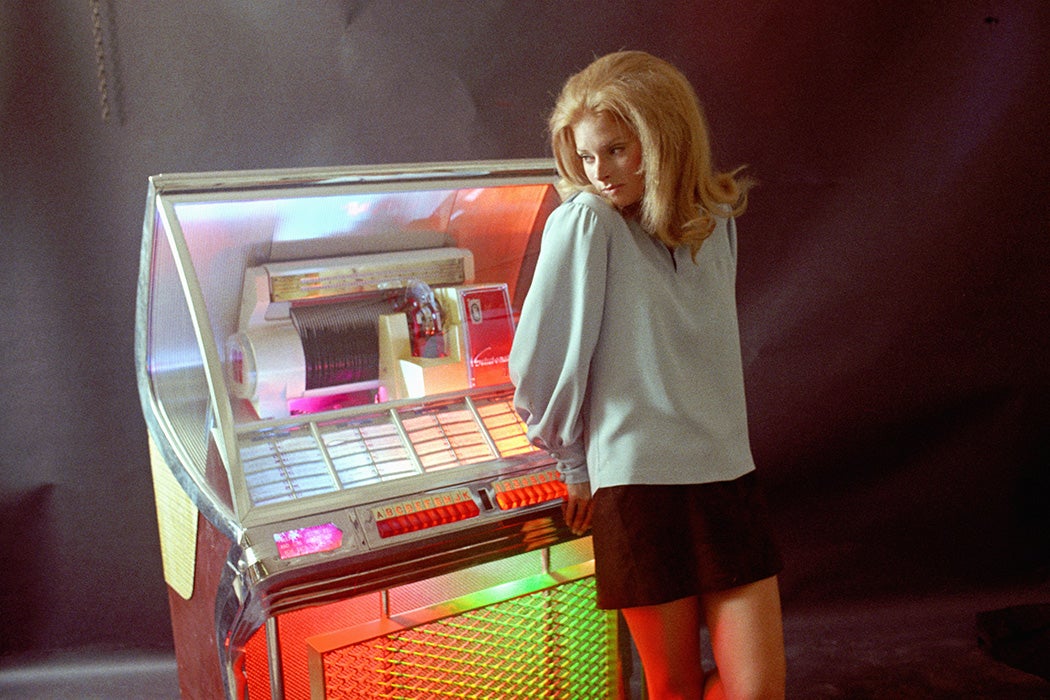Today, jukeboxes seem oddly quaint or retro. Nobody needs to drop a coin into a machine to play their favorite song. After all, almost everyone has a library of music in their pocket with Spotify or Apple Music. Occasionally you’ll find a bar or diner that still has a jukebox (often with records that haven’t been updated in decades), but that’s increasingly rare. In their heyday, however, jukeboxes were everywhere. They offered performative music appreciation: the user wasn’t just playing a hot tune, they were sharing their taste with everyone else in the venue.
The road to the jukebox starts with Thomas Edison, who invented the phonograph. But the neon-rimmed machine that gets a hard palm-slap from Fonzie in Happy Days was the result of progress through a number of forces. In the early twentieth century, the success of the phonograph (more than 500,000 were manufactured in 1914 alone) meant some entrepreneurs were soon looking at coin slots as an option.

Historian William B. Pickett credits businessman Homer E. Capehart with helping to spread the machines. Capeheart was a gifted salesman. He was selling “Butter-Kist” popcorn machines for the Holcomb and Hoke Company to theaters and stores when he spotted a jukebox and saw its potential.
“On one of his business trips to Cleveland, Capehart had met Thomas Small, the inventor of an electrical machine that would play twenty-eight records on both sides continuously; that is, until someone turned it off,” writes Pickett.
Recognizing the market possibilities, Capehart set up a company to manufacture and market his jukeboxes.
“Within six months he was manufacturing a coin-operated phonograph called ‘The Orchestrope’,” Pickett explains. He also made the Capehart 400, a home model phonograph.
The 1929 Wall Street Crash would end his business, but Capehart still saw phonographs as a growth opportunity. He went ahead and purchased a key invention: the multi-selector, which allowed a user to pick the next record to be played rather being forced to listen to whatever was next in the stack. He then offered to sell the invention to the Rudolph Wurlitzer Company, which in turn hired him as sales manager for its coin phonographs.
Capehart also gave some thought to aesthetics, Pickett writes. He was
worried that the earlier-model Wurlitzer juke boxes in their hand-rubbed hardwood cabinets too frequently “looked like coffins standing on their ends,” [so he] designed the juke boxes so that they became ever more decorative, colorful, brightly lighted, and, sometimes, mechanically sophisticated.
His efforts and innovation turned around sales at Wurlitzer, until they were shifting 150,000 jukeboxes per year. He also made Wurlitzer the recognized leader in the industry. (NB, “jukebox” wasn’t a term used by the manufacturers or promoters of these machines, although it became the general term in use. That name derived from “juke joint,” which described a Black American bar featuring music and dancing and had a derogatory tone. The terms “automatic phonograph” or “coin-operated phonograph” were used in the brochures.)
The influence of the jukebox wasn’t limited to the United States, either. In his short piece, “The Juke Box Comes to Tecolotlan,” Norman Daymond Humphrey describes the “near riot” that occurred when the Preciado brothers installed a jukebox in a terraza in a small town in Mexico in 1946.
Weekly Newsletter
“By nine o’clock the crowd had grown so large that the presidente municipal was thinking of calling out the army reserve to break up the potentially riotous gathering,” Humphrey reports. Fortunately, a movie show started nearby that diverted some of the crowd.
In Jamaica in the 1950s and ’60s, jukeboxes offered a chance for people to hear new music that challenged the orthodoxy. Radio stations played so-called middle-class music—calypso, swing, the jazz of Nat King Cole, the croon of Bing Crosby, and the light orchestra music of Montavani. According to historian Dennis Howard, jukeboxes in Kingston, Jamaica’s capital city,
thus became the central site in everyday life for the expression of working class sensibilities through mento, ska, rock steady and reggae. Popular records which did not enjoy the privilege and benefit of airplay due to their revolutionary tone and political messages and mainstream rejection found a home in jukeboxes.
Meanwhile, back in the US, the increasing role jukeboxes played in public music consumption was seen by some as a problem. In a 1956 lament on music education, music teacher Arlan R. Coolidge despairs that
the juke box at the corner drug store has become the musical library for the younger set all over America. The “Dixieland” beat, the Mambo, Eddie Fisher and “The Crew-Cuts” spell musical savoir-faire in the season 1955–56. This may not trouble us too much until we see that these comprise the beginning and the end, by and large, for the rising generation.
(One can only wonder what he thought when the Beatles arrived on the scene.)
But jukeboxes required maintenance and regular updates, as the records had to be replaced with newer hits. Popular culture shifted away from people paying ten cents to hear the Billboard top ten. The jukebox aesthetic, however, became part of the 1940s and ’50s vernacular, with home record players often produced to replicate the appearance of a diner jukebox.







